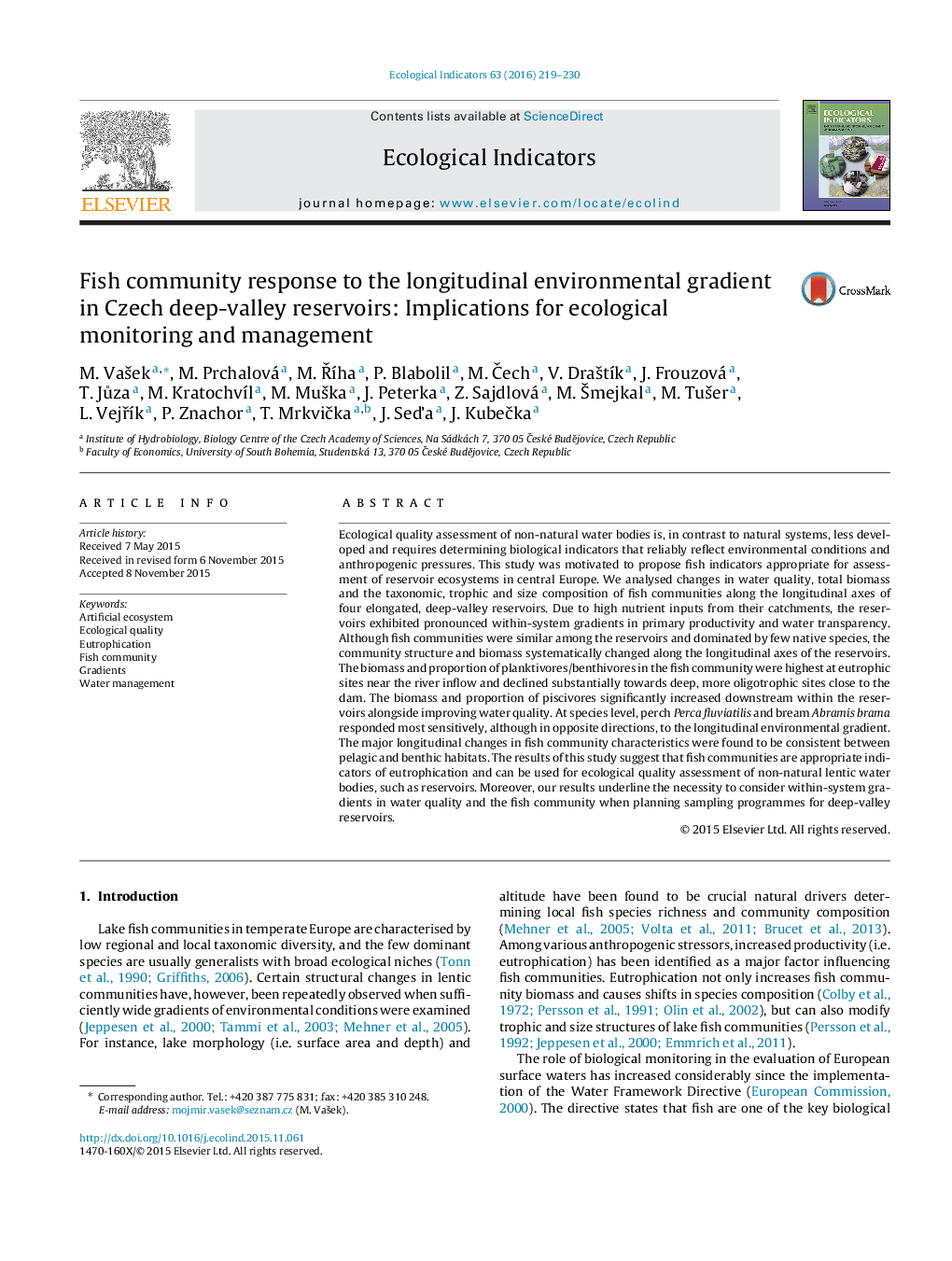| Article ID | Journal | Published Year | Pages | File Type |
|---|---|---|---|---|
| 6293856 | Ecological Indicators | 2016 | 12 Pages |
Abstract
Ecological quality assessment of non-natural water bodies is, in contrast to natural systems, less developed and requires determining biological indicators that reliably reflect environmental conditions and anthropogenic pressures. This study was motivated to propose fish indicators appropriate for assessment of reservoir ecosystems in central Europe. We analysed changes in water quality, total biomass and the taxonomic, trophic and size composition of fish communities along the longitudinal axes of four elongated, deep-valley reservoirs. Due to high nutrient inputs from their catchments, the reservoirs exhibited pronounced within-system gradients in primary productivity and water transparency. Although fish communities were similar among the reservoirs and dominated by few native species, the community structure and biomass systematically changed along the longitudinal axes of the reservoirs. The biomass and proportion of planktivores/benthivores in the fish community were highest at eutrophic sites near the river inflow and declined substantially towards deep, more oligotrophic sites close to the dam. The biomass and proportion of piscivores significantly increased downstream within the reservoirs alongside improving water quality. At species level, perch Perca fluviatilis and bream Abramis brama responded most sensitively, although in opposite directions, to the longitudinal environmental gradient. The major longitudinal changes in fish community characteristics were found to be consistent between pelagic and benthic habitats. The results of this study suggest that fish communities are appropriate indicators of eutrophication and can be used for ecological quality assessment of non-natural lentic water bodies, such as reservoirs. Moreover, our results underline the necessity to consider within-system gradients in water quality and the fish community when planning sampling programmes for deep-valley reservoirs.
Keywords
Related Topics
Life Sciences
Agricultural and Biological Sciences
Ecology, Evolution, Behavior and Systematics
Authors
M. VaÅ¡ek, M. Prchalová, M. ÅÃha, P. Blabolil, M. Äech, V. DraÅ¡tÃk, J. Frouzová, T. Jůza, M. KratochvÃl, M. MuÅ¡ka, J. Peterka, Z. Sajdlová, M. Å mejkal, M. TuÅ¡er, L. VejÅÃk, P. Znachor, T. MrkviÄka, J. SeÄa, J. KubeÄka,
